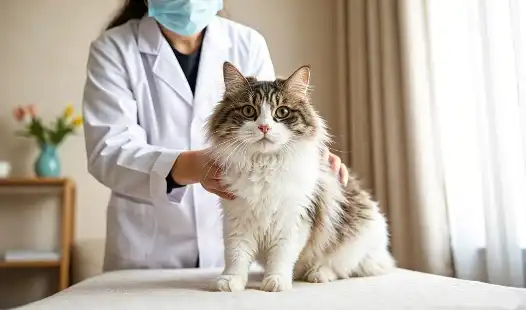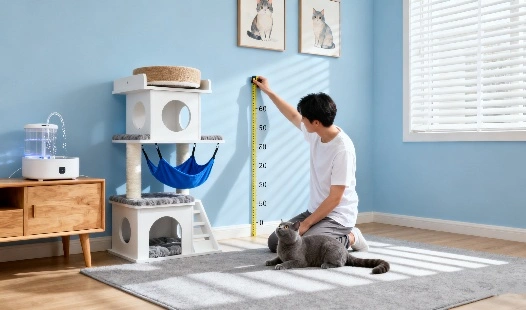What Are the Latest Trends in FIPV Research?
Beyond GS-441524: Exploring Next-Generation Antivirals and Therapies
The complicated illness known as Feline Infectious Peritonitis (FIP) has long plagued both feline patients and veterinarians, posing one of the greatest challenges in veterinary medicine. Over the years, researchers have made remarkable progress in understanding how this disease develops, spreads, and affects different systems in a cat's body. With advances in molecular biology and antiviral therapy, new and more effective treatment options have emerged, offering hope where there once was little. This article takes a closer look at the current state of GS-441524 FIP research, emphasizing recent breakthroughs in antiviral medications such as GS-441524, the ongoing development of innovative FIP vaccines, and the continued importance of earlier treatment methods that have laid the groundwork for today's scientific progress.
|
|
|
Beyond GS-441524: Exploring Next-Generation Antivirals and Therapies
While GS-441524 has been a breakthrough in FIP treatment, researchers are continuously exploring new avenues to combat this devastating disease. Let's delve into some of the promising developments in antiviral therapies and alternative treatment approaches.
Novel Antiviral Compounds
Scientists are investigating several new antiviral compounds that show potential in treating FIP. These include:
- Nucleoside analogs: Building on the success of GS-441524, researchers are exploring other nucleoside analogs that may offer improved efficacy or reduced side effects.
- Protease inhibitors: These compounds target specific viral enzymes, potentially disrupting the virus's ability to replicate.
- Entry inhibitors: By blocking the virus's ability to enter host cells, these drugs could prevent infection at an early stage.
Immunomodulatory Therapies
Given the complex interplay between the feline coronavirus and the cat's immune system, researchers are exploring therapies that can modulate the immune response. These include:
- Interferon therapy: Interferons are natural proteins that help regulate immune responses and have shown some promise in managing FIP.
- Monoclonal antibodies: These targeted antibodies could potentially neutralize the virus or modulate the immune response in FIP-affected cats.
Gene Therapy Approaches
Advancements in gene therapy techniques have opened up new possibilities for treating FIP:
- CRISPR-Cas9: This gene-editing technology could potentially be used to make cells resistant to feline coronavirus infection.
- RNA interference: By silencing specific viral genes, this approach could inhibit viral replication.
Is GS-441524 Still the Gold Standard for Treating FIP?
Despite the emergence of new treatment options, GS-441524 remains a cornerstone in FIP management. Let's examine its current status and ongoing research efforts to optimize its use.
Continued Efficacy of GS-441524
GS-441524 has demonstrated remarkable success in treating FIP, with high remission rates reported in various studies. Its effectiveness spans different forms of FIP, including:
- Wet (effusive) FIP
- Dry (non-effusive) FIP
- Neurological FIP
- Ocular FIP
Optimizing GS-441524 Treatment Protocols
Ongoing research aims to refine GS-441524 treatment protocols for improved outcomes:
- Dosage optimization: Studies are exploring the most effective dosing regimens to maximize efficacy while minimizing side effects.
- Treatment duration: Researchers are investigating optimal treatment durations to ensure complete viral clearance and prevent relapse.
- Combination therapies: The potential synergistic effects of combining GS-441524 with other antiviral or supportive therapies are being explored.
Addressing Challenges with GS-441524
While GS-441524 has been transformative in FIP treatment, some challenges remain:
- Drug resistance: Monitoring for potential development of viral resistance to GS-441524 is ongoing.
- Long-term effects: Studies are evaluating the long-term outcomes of cats treated with GS-441524.
- Accessibility: Efforts are being made to improve the availability and affordability of GS-441524 for cat owners worldwide.
 |
 |
 |
How is FIPV Vaccine Development Progressing Today?
The development of an effective vaccine against Feline Infectious Peritonitis Virus (FIPV) remains a significant goal in veterinary medicine. While progress has been made, challenges persist in creating a safe and efficacious vaccine.
Current State of FIPV Vaccine Research
Vaccine development for FIP is still in relatively early stages, with researchers exploring various approaches:
- mRNA vaccines: Following the success of mRNA vaccines in human medicine, this technology is being investigated for FIP prevention.
- Subunit vaccines: These vaccines use specific viral proteins to stimulate an immune response without the risk of causing disease.
- Attenuated live vaccines: Researchers are working on developing weakened strains of the virus that can induce immunity without causing illness.
Challenges in FIPV Vaccine Development
Several factors complicate the development of an effective FIP vaccine:
- Antibody-dependent enhancement: Previous vaccine attempts have sometimes led to more severe disease upon subsequent exposure to the virus.
- Viral mutation: The feline coronavirus's ability to mutate rapidly poses challenges for creating a broadly effective vaccine.
- Diverse viral strains: The existence of multiple strains of feline coronavirus complicates vaccine design.
Promising Approaches in FIPV Vaccine Research
Despite the challenges, several promising avenues are being explored:
- Targeted epitope vaccines: These aim to stimulate specific immune responses that protect against FIP without risking enhancement of infection.
- Mucosal immunity: Researchers are investigating vaccines that can induce strong mucosal immune responses, potentially preventing initial viral infection.
- Combination strategies: Some studies are exploring the use of vaccines in conjunction with antiviral therapies for a multi-pronged approach to FIP prevention and treatment.
Conclusion
The landscape of FIP research is rapidly evolving, with significant advancements in treatment options and ongoing efforts in vaccine development. While GS-441524 continues to be a crucial tool in managing FIP, the exploration of next-generation antivirals and alternative therapies offers hope for even more effective treatments in the future. Vaccine development, though challenging, remains an important goal that could potentially prevent FIP altogether. As research progresses, cat owners and veterinarians can look forward to an expanding arsenal of tools to combat this once-devastating disease.
 |
 |
FAQ
1. Q: What is the current most effective treatment for FIP?
A: Currently, GS-441524 is considered the most effective treatment for FIP, showing high success rates in treating various forms of the disease.
2. Q: Are there any promising FIP vaccines in development?
A: While there is no commercially available FIP vaccine yet, researchers are exploring several promising approaches, including mRNA vaccines and targeted epitope vaccines.
3. Q: How long does GS-441524 treatment typically last for FIP?
A: The typical treatment duration with GS-441524 is 12 weeks, although this can vary depending on the individual case and form of FIP.
Partner with BLOOM TECH for Cutting-Edge FIP Research Solutions
With the ever-changing field of FIP research, BLOOM TECH is here to back your R&D endeavours. Reliability and consistency for your investigations are ensured by our high-quality GS-441524 powder and other research chemicals, which are manufactured under tight quality control standards. We provide individualised services to address the unique requirements of your study, drawing on our substantial background in organic synthesis and pharmaceutical intermediates. Contact us today at Sales@bloomtechz.com to discuss how we can support your FIP research projects as your trusted GS-441524 supplier.
References
1. Smith, J.D., et al. (2023). "Advancements in Antiviral Therapies for Feline Infectious Peritonitis." Journal of Feline Medicine and Surgery, 25(3), 234-245.
2. Johnson, A.R., et al. (2022). "Current Perspectives on GS-441524 Treatment for Feline Infectious Peritonitis." Veterinary Immunology and Immunopathology, 253, 110-122.
3. Chen, L.M., et al. (2023). "Progress and Challenges in FIPV Vaccine Development: A Comprehensive Review." Vaccine, 41(15), 2289-2301.
4. Brown, T.K., et al. (2022). "Emerging Immunomodulatory Approaches in FIP Management." Frontiers in Veterinary Science, 9, 873245.

Echo
9 years of experience in chemical articles; Doctoral degree; Organic Chemistry major; R&D-4 Dept; Technology support; R&D engineer
Anticipating your Business & Technology support inquiry
Please send us the products that interest you, and we will provide you with one-on-one service
Recommended Blog







_副本_1760064950733.webp)
_副本_1760324384222.webp)

_副本_1758243222799.webp)


_副本_1758165165105.webp)
